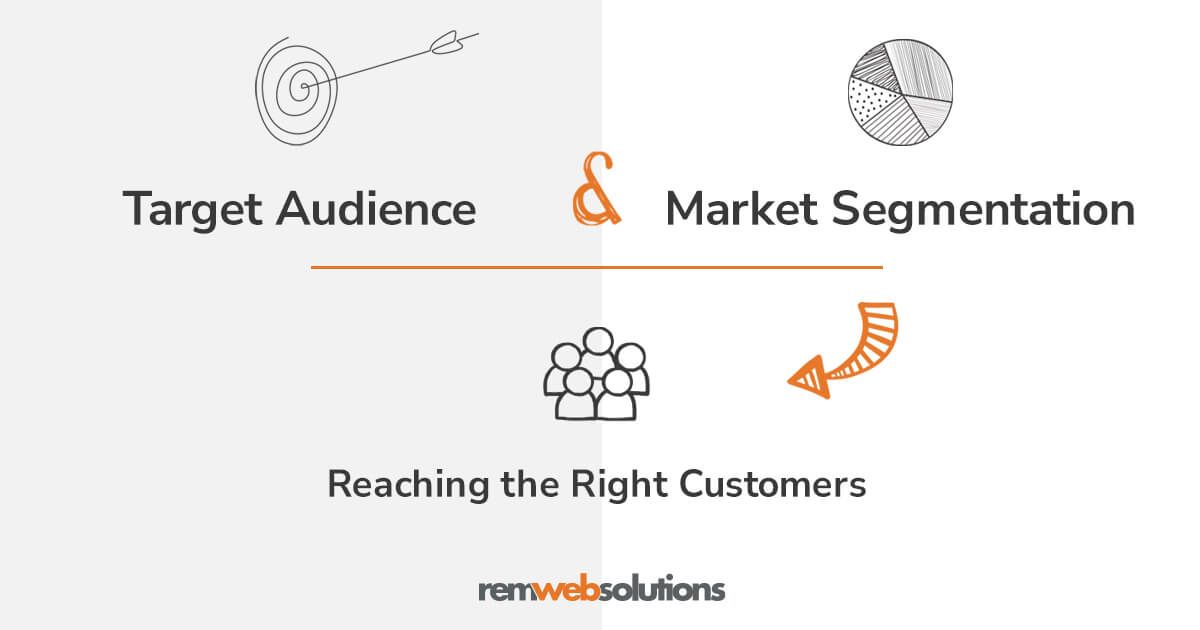
Fact: trying to please everyone is a surefire path to pleasing no one.
This axiom applies as much to marketing as it does to hosting a family dinner (speaking as someone who serves two entirely different kinds of peas to keep everyone happy.)
No single advertising message can appeal to everyone. Think about it: even for universal necessities like toilet paper, brands come up with distinct names, logos, packaging, and advertising messages (from eco-friendly to quilted comfort) to attract a specific audience.
As consumers, this is obvious to us. You can usually tell if you’re someone’s target audience based on cues like packaging design, slogans, and even the demographics featured in advertisements.
Yet, when we switch hats from consumer to business, it’s easy to forget that we can’t please everyone.
Many of our marketing clients are hesitant at first to narrow down their advertising to a specific target audience. The fear is that, in doing so, they might accidentally turn away other potential customers.
This concern comes from a reasonable place, especially when you’re operating on a tight budget - which is the reality for most in the current economic climate.
Yet, experience and evidence consistently show that a well-crafted, targeted marketing message that speaks directly to a defined segment of your market is far more likely to deliver a strong return on investment than a watered down, generic one.
While Neapolitan is delicious – everyone has a favourite flavour, and knowing who to appeal to will bring in the audience you want (food analogies are the best.)
So, in this article, we're going to discuss target audience and market segmentation so you can craft a stronger, more effective advertising message.
At REM Web Solutions Inc., we thrive on helping our customers grow their businesses in tangible and impactful ways. If you need support with your digital marketing efforts or website design and development, don’t hesitate to reach out. Our skilled team is always here to support you in navigating the digital landscape!
Know Your Target Audience
Imagine you have a room full of people. This is your market.
Now, within this room, there are groups of people who share similar traits, like age, interests, or even the challenges they face daily. These smaller groups within the larger room are your target audiences.
Each group talks about something different, and in different ways. They have different opinions, experiences, wants, and needs.
If you want to make a good impression, you're not going to push your way into one of these groups and derail the conversation. You’ll listen, nod, and wait for the right moment to add your piece in a way that adds to the dialogue.
More importantly, your approach will differ for each group in that room. The joke that lands with your own age group probably won’t work with folks who are older or younger, for example.
Why does this matter? Because this approach—speaking directly to a specific target audience in a way that speaks their language—will turn more of these people into happy customers.
Target Audience vs. Market Segmentation: What's the Difference?
Think of your market as anyone and everyone who might need or want what you're selling. Your target audience, however, is more specific.
It's a slice of the pie defined by shared characteristics such as:
Age
Gender
Location
Job role
Income
Education
Family size
Now, market segmentation is how you slice that big pie into these smaller, more manageable pieces. It’s about categorizing your market into clearly identifiable segments, making it easier to address the unique needs of each group.
For instance, if you're selling bicycles, your broad target audience is anyone who rides bikes—that's a lot of people worldwide. But not all cyclists are the same. You have toddlers on training wheels, weekend family riders, urban commuters navigating city streets, mountain biking adrenaline junkies, delivery drivers relying on bikes daily, and many more. Each group uses bicycles differently and thus has distinct needs and preferences.
A family looking for a leisurely ride in the park won't be impressed with the same high-spec bike that a mountain biker would need. A delivery driver in a bustling city might find an electric bike with a storage basket incredibly useful, but a BMX racer wouldn't care for it at all.
These differences illustrate why understanding your market segments is so important. When you recognize these diverse needs, you can craft marketing messages that resonate personally with each segment, making your marketing far more effective.
How Target Audience and Market Segmentation Helps
Why spend time and resources trying to connect with your target audience? Because it’s the most straightforward path to seeing real results from your digital marketing efforts.
Identifying your target audience impacts virtually every aspect of your digital marketing strategy. Everything you do is more effective when you know exactly who you’re talking to and what to say.
This includes:
Copywriting: Knowing who you're talking to allows you to craft your message in a way that speaks directly to their needs, desires, and challenges. It’s about finding the words that resonate, making your offers irresistible to those most likely to be interested.
Content Marketing: Whether it's blog posts, videos, or podcasts, understanding your audience ensures that you create content that addresses their specific interests and concerns, drawing them closer to your brand.
Email Marketing: Email campaigns can be highly personalized when you know your audience well. This means higher engagement rates and more conversions because you’re sending messages that matter to the recipient.
Social Media Marketing: Not all social platforms are created equal when it comes to reaching your target audience. Knowing where your audience spends their time helps you focus your efforts and engage with them more effectively.
Social Media Advertising: With a clear target audience in mind, you can use social media's powerful advertising and targeting tools to reach potential customers more precisely, whether through demographic, geographic, or interest-based targeting.
Pay-Per-Click (PPC): Understanding your audience helps determine where to allocate your budget and what targeting options to use, ensuring your ads are seen by those most likely to click through and convert.
Search Engine Optimization (SEO): By knowing the keywords and phrases your target audience uses, you can optimize your website and content to rank higher in search results for those terms, leading to more organic traffic.
Getting clear on your target audience is a foundational aspect of any successful marketing strategy. It guides where you should focus your efforts, what language to use, and how to connect meaningfully with the people most important to your business's success.
Starting with a deep understanding of your target audience sets the stage for more effective, impactful marketing across the board.
How to Pinpoint Your Target Audience
Finding out who your target audience is means gathering information from different sources and fitting them together to see the full picture.
Here are a few strategies that will help you paint a detailed portrait of your target audience, one that goes beyond basic demographics to reveal their behaviour, preferences, and needs.
1. Peek at Your Competitors
Starting with competitor analysis is a smart move. After all, you and your competitors are likely fishing in the same pond. Understanding whom they're targeting—and how—can offer valuable insights into who might be interested in your products or services.
Look at their social media presence, the content they produce, and any marketing campaigns they run. What messages are they sending, and to whom?
This doesn’t mean you should mimic their strategy, but it can help you define your unique angle to engage a similar audience.
2. Dive into Your Own Data
There’s a goldmine of information within your own business—real data from real users. Leveraging internal analytics helps eliminate guesswork, allowing you to make informed decisions based on concrete evidence. Key data sources include:
Google Analytics 4 (GA4): Offers insights into who is visiting your website, how they're interacting with your content, and what actions they’re taking.
Customer Relationship Management (CRM) Systems: Provide detailed information on your existing customers, from demographic data to purchase history, assuming you’ve got a CRM.
Past Campaign Performance: Reviewing what has worked (and what hasn’t) can give you a clear picture of who is most responsive to your messages.
3. Review Social Media Analytics
Social platforms are rich sources of demographic and interest-based data on your followers. This audience, already engaged with your content, likely holds a genuine interest in your offerings.
However, recently, most social media platforms have become rather opaquer when it comes to things like audience demographics and interests. This is good from a consumer perspective (do the companies you follow really need to know that much?), but limiting when it comes to, well, marketing.
If you really want to get serious about your audience’s interests, audience research tools like SparkToro can help fill the gaps left by privacy crackdowns.
4. Talk Directly to Potential Customers
You can't beat getting information straight from the source. Conducting interviews with potential or current customers can provide deep insights into their needs, preferences, and pain points.
Whether it’s one-on-one conversations, surveys, or focus groups, direct feedback is invaluable. Ask about their goals, challenges, and what they look for in products or services like yours.
This direct line of communication not only helps in defining your target audience but also strengthens customer relationships.
The Path to Precision Marketing
We understand that putting these principles into practice can be tough, especially when you're juggling the day-to-day demands of running a business. That's where we come in.
Our digital marketing team is here to help you fine-tune your marketing strategies, ensuring they're not just heard but also resonate with the people who matter most to your business.
Whether you’re looking to refine your target audience, enhance your content marketing, optimize your social media strategy, or achieve a higher return on investment for your advertising efforts, we’re here to guide you every step of the way.























